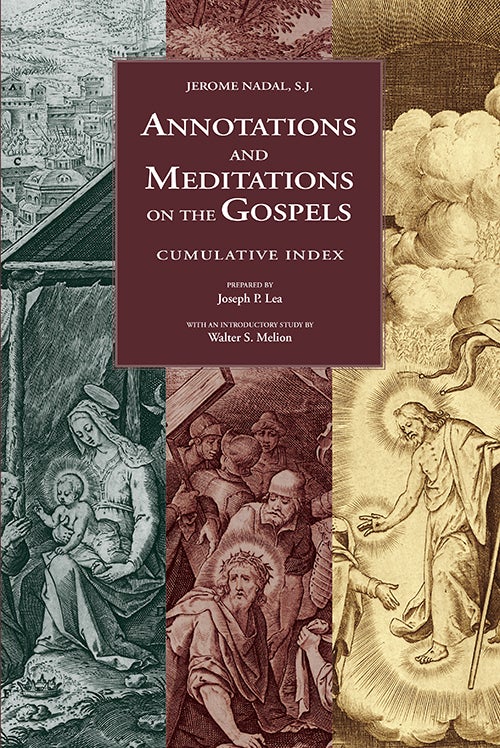
Annotations and Meditations on the Gospels: Cumulative Index
Price: $39.95
Place Published: Philadelphia
Publisher: Saint Joseph's University Press
Date Published: 2014
ISBN: 9780916101626
Book ID: 75
Description:
196 pp. / 8 x 12 ¼ in. / 25 images in color
This volume brings to completion the "Nadal project" undertaken by Saint Joseph's University Press that makes available the sections of Jerome Nadal's Annotations and Meditations on the Gospels (1595, with a second edition the same year and a third in 1607) corresponding to the three major seasons of the liturgical year (Advent and Christmas, Lent, and Easter): Vol. 1: The Infancy Narratives (2003), Vol. 2: The Passion Narratives (2007), and Vol. 3: The Resurrection Narratives (2005). This cumulative index to these three volumes is divided into four parts: Index of Persons, Scriptural Index, Index of Subjects, and Iconographical Index.
Together with the cumulative index, Saint Joseph's University Press is pleased to offer a final incisive essay by Professor Walter S. Melion, who contributed introductory essays to each of the three preceding Nadal volumes. The title of his richly illustrated essay in this cumulative index volume is: "'Quis non intelliget hoc voluisse Christum': The Significance of the Redacted Images in Jerónimo Nadal's Adnotationes et Meditationes in Evangelia of 1595."
Table of Contents
List of Illustrations
Preface
Introductory Essay
"'Quis non intelliget hoc voluisse Christum': The Significance of the Redacted Images in
Jerónimo Nadal's Adnotationes et Meditationes in Evangelia of 1595"
Walter S. Melion (Asa Griggs Candler Professor of Art History, Emory University)
Index of Persons
Scriptural Index
Index of Subjects
Iconographical Index
CRITICAL ACCLAIM
"The Cumulative Index, which serves all three previous volumes, provides indices of persons, references to scripture, subjects, and iconography. . . . Melion's essay is a powerful explanation of the basis for the Jesuits' cultural mission, which would ultimately find expression across all the arts."
Matthew Knox Averett (Creighton University), Sixteenth Century Journal



